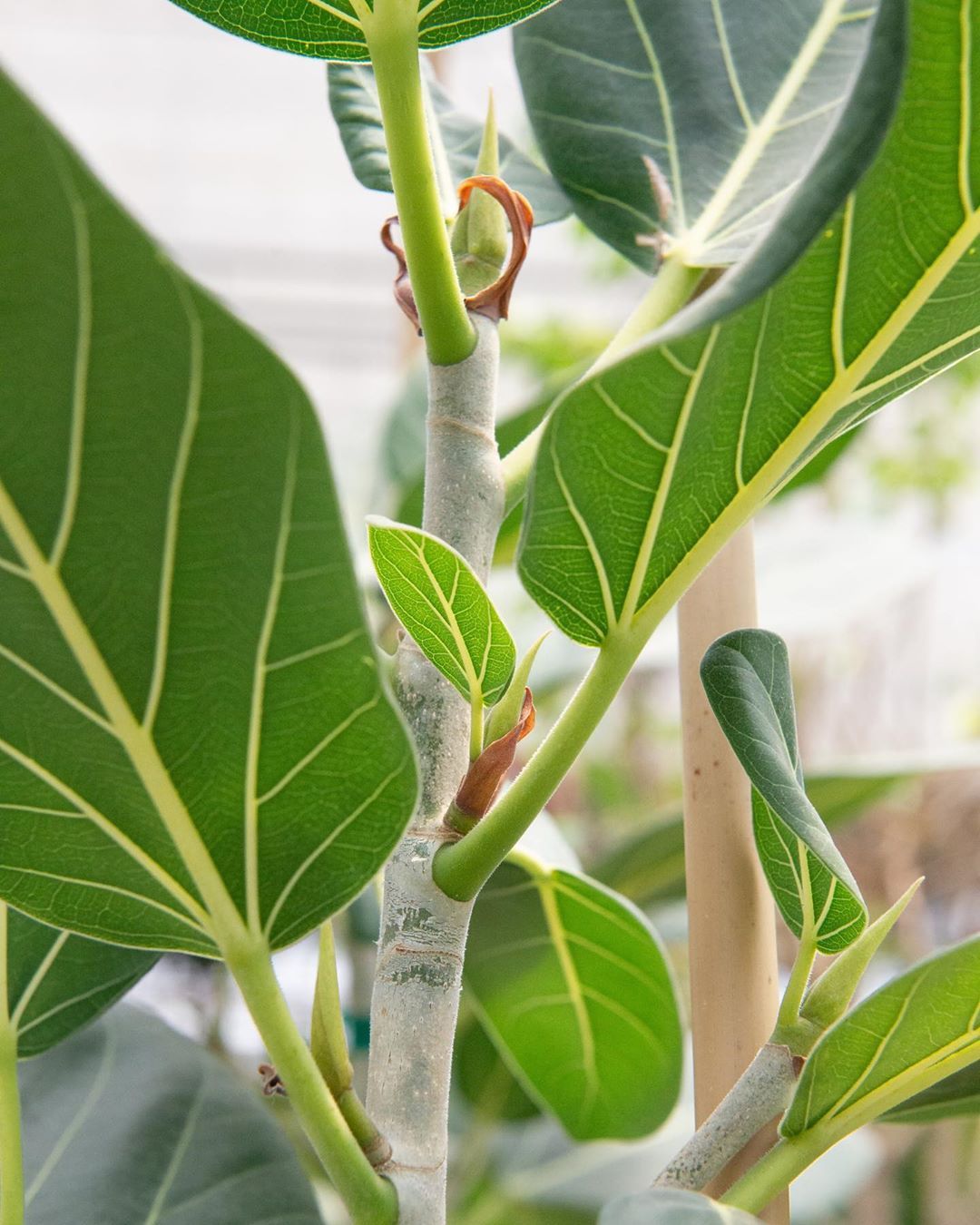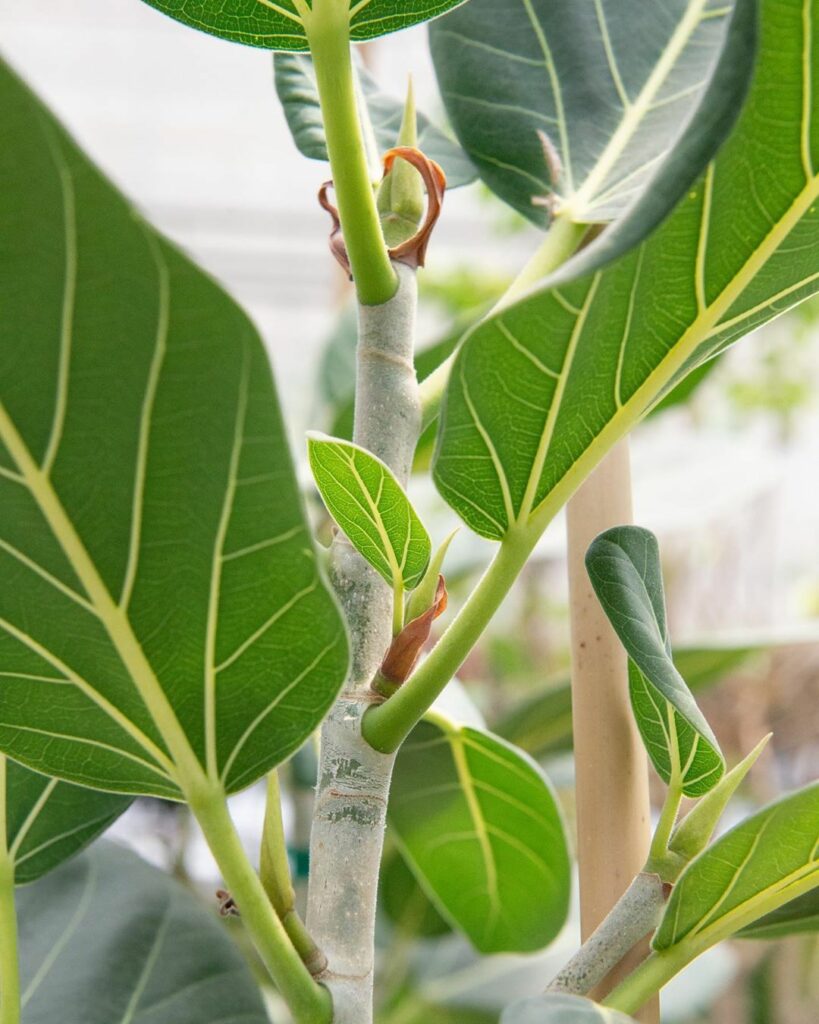Ficus Audrey Care: How to Grow & Care For The Strangling Fig
Purchasing and taking care of my first Ficus Audrey left me with a mind-blowing obsession over fiddle-leaf producing plants. After nurturing it for a couple of months, I learned a few ropes on every single thing this variety needs throughout the seasons in order to maintain its vibrant foliage and the ever-tall canopy. Read on to find out more about planting and maintaining your Ficus Audrey houseplant from the ground up.
Fun Facts about The Ficus Audrey
The Ficus Audrey, or Ficus Benghalensis, is a woody plant with structural tissues on the stems—making it grow unusually tall. But don’t let the staggering height intimidate you—it doesn’t take much to make your Ficus plant grow huge and healthy.
By far, this plant has a large and gorgeous canopy, compared to most other houseplants. So where is it originally from and how big does it grow? Perhaps you could ask. Well, this plant is native to India and Pakistan and has the immense potential to reach up to 100 feet tall. What you might also not know is this plant is a close cousin to the fiddle-leaf fig, hence why they seem to have a convincing resemblance.
It officially belongs to the Moraceae family. If you stroll into your nearest gardening retail store, you’ll also find this plant going by these other names:
- Indian Banyan
- Banyan Fig
- Peepal
- Strangling Fig
Unlike its cousin, the fiddle-leaf fig, this houseplant is more tolerant to fluctuating conditions such as uneven watering patterns. And more reason why it’s quite dominant in India is that the Buddhist community—since the ancient ages—believe the plant brings enlightenment and use it as a therapeutic accessory.
Ficus Audrey Care Blueprint
Light, Humidity & Temperature
Same as its closest cousin, the Ficus Audrey loves to be placed under bright indirect light. So it’d be best you pick a spot close to the window or grow it under a partial shade setting. On the other side of things, this houseplant doesn’t put up with low light conditions. If your place your Strangling Fig somewhere with dim light, the leaves might begin to aggressively fall off. I’d, therefore, strongly recommend placing the container on a windowsill that’s facing east.
While you don’t need to have huge french windows in your living space, it’s essential to strike a balance between these to extremes when it comes to the lighting conditions—especially if all you’re just looking for is optimal yield a few months after propagating your Ficus Audrey plant.
But if we compare this variety to its cousin, the ” fiddle-leaf fig”, it really has a higher tolerance level against terrible surrounding temperatures. The ideal room temperature that could fuel this plant to grow profusely is anything above 70°C. And since this plant thrives much better under USDA 10 through 12, it prefers humid environments throughout all the seasons. But if the vapor level in your indoor space is low, you can sacrifice a few bucks and buy a digital humidifier for houseplants.
So if you’re thinking of adding this plant to your collections, you need to regularly keep it hydrated using a mist spray bottle- to keep the humidity levels up to mark. And if you’re looking to grow several plants from this variety, prepare the nursery anytime around the spring season. And it’s no reason why the warm and humid conditions in Florida make this plant widely grown among many households across this state.
Watering & Feeding
One mistake you can’t afford to do is overwater your Indian Banyan. You want to check the moisture level of the soil before watering your plant again. Also, you need to leave the soil for a few days so it can face a drought period. Make sure the first 2 or 3 inches of the topsoil are dry before watering your plant next. If the edges of the leaves are turning yellow or develop brown patches, that could be a sign to mean that you’re overwatering your Strangling fig plant.
Use slow-releasing fertilizer that doesn’t damage the plant’s fiddle leaves since they tend to get overly sensitive when in contact with synthetic compounds. And because high chances are you desperately want the foliage to look constantly gorgeous, make sure the fertilizer has all the essential macronutrients, and keep the leaves from pests, bacterial or fungal infections.
Such diseases would ruin the radiant look you gracefully expect from your Strangling Fig throughout the seasons. For optimal results, fertilize it once every month during spring and summer. You want to, however, skip winter since the growth and rooting hormones don’t adapt to any triggers you might opt to use when the temperatures are freezing.
Soil & Transplanting
Your Strangling Fig prefers rich soil and a pot with a couple of drainage holes. Use normal soil that’s permeable and has all the essential nutrients your plant needs, to get bigger and colorfully appealing. You also want to aerate the soil before watering your plant since it helps water, air, and soluble nutrients from the fertilizer to penetrate through with lots of ease.
To control the size of your plant, mostly when you’re growing it indoors, you need to transplant it not more than once per year. Choose a pot that’s 2-4′ inches larger in diameter, to give your plant extra room for growth. But if you want the size of your plant to remain the same, just use a container with the same dimensions as the previous one. And the best time to re-pot your plant is during the early weeks of spring when the growth hormones are dominantly active. Make sure to replace the soil so your plant can have room to absorb newer nutrients.
Routine Grooming
Compared to other tall and wide houseplants, the Ficus Audrey is hugely easy to care for. It adapts to harsh conditions way more than its cousin, the Fiddle Leaf. And while you’re at it, keep in mind that this plant doesn’t love to be drenched in too much water, but nonetheless, it finds its way to healthy living even after hours or days of staying in soggy soil.
But if you water your Ficus Audrey a lot less number of times that required, the leaves will begin dropping. You need to pluck them off to maintain the plant’s persona and level of aesthetic it brings to the table. Use a sharp, sterilized knife and gloves when pruning your plant so you don’t transmit and infectious diseases, or even worse, recurring bacteria that leeches off of its potential yield.
How to Propagate The Ficus Audrey
Propagating your Ficus Audrey is fairly easy if especially you’re using cuttings or seeds. To get started with the stem cuttings you need to:
- Cut a tip from the base level where it’s attached to the main stalk.
- Pick a stem that’s not woody so that the rooting hormone can work on it quite fast.
- Make sure the stem has a few leaves attached to it.
- After some period of time, say, 3 to 4 weeks, the leaves should begin sprouting.
- If you’re looking to grow your Ficus Audrey outdoors, remember to transplant it as soon as new leaves begin to bloom.
- It’s worth noting that this plant is prone to extremely hot or cold conditions, so you need to keep the new growing medium in an environment with high humidity and fairly warm temperatures.
You can also use seeds to carry out the whole propagation exercise right from scratch. If you want to choose this method, purchase your seeds from credible gardening retailers and use the exact potting soil mix we underlined in this guide.
Common Pests & Diseases
Although this plant might seem quite tactful to take care of, it hardly gets exposed to serious diseases or pest attacks. But you might occasionally have to deal with mealybugs, scale insects, and spider mites, mostly during winter. A quick remedy to help suppress such pests is spraying neem oil on the affected parts of the plant.
In case you spot any dark patches on your Ficus Audrey that might indicate that it’s struggling with bacterial or fungal infections. Your plant will also start to exhibit a few symptoms of overwatering. One common sign you’ll observe is white powdery residues on the walls of the container.
The flower buds, on the other hand, will begin to wither off if the soil loses the organic fertility or when the surrounding air is too dry. Another worrisome issue you might need to deal with is the rotting of the leaves and roots if the soil stays drenched in water for too long.
Ficus Audrey Benefits & Uses
The Strangling Fig is a tropical plant that fits so well in corner spaces that are well lit. By far, this plant is so easy to care for, in contrast to other varieties, and mutates to wild-growing conditions across the different seasons.

